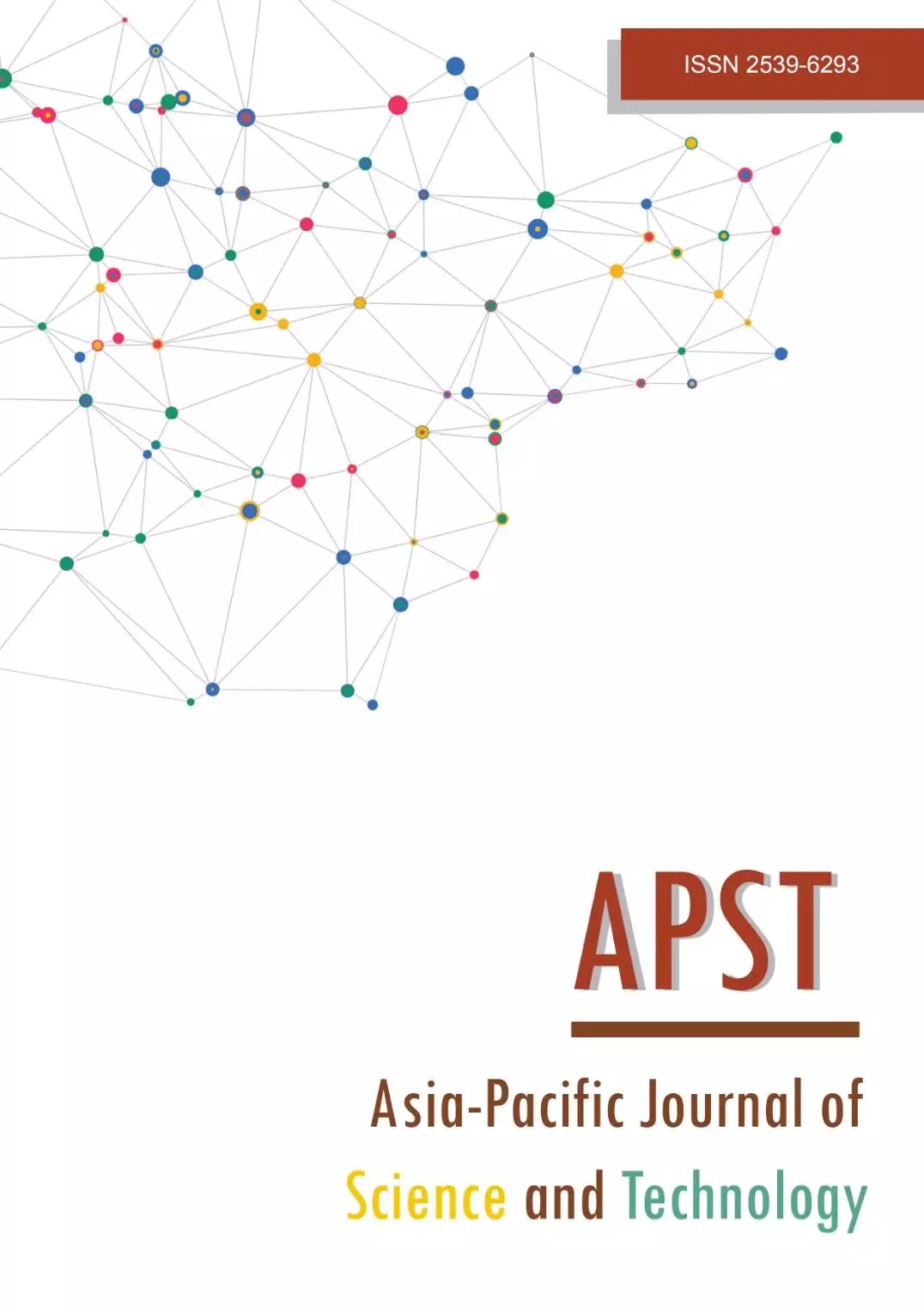Safety effectiveness of an upgraded midblock pedestrian crossing on an urban arterial road
Main Article Content
Abstract
Pedestrians are vulnerable road users who have a high risk of being struck by vehicles; their dying accounts for 8% of all road fatalities in Thailand. Thus, this study investigated the effectiveness of midblock pedestrian crossing improvements, comparing (1) a typical zebra crossing (C1), (2) a zebra crossing with traffic markings and warning signs (C2), and (3) a crossing as in C2 but with pedestrian signals (C3). This current research investigated the traffic volume and speeds of motorcycles (MC) and passenger cars (PC) before and after the improvement. The findings indicated that the 85th percentile speeds and the estimated maximum speed of MC and PC decreased significantly after the C2 and C3 improvements. Consequently, fatality probabilities of pedestrians were also estimated. It was found that the fatality probabilities of the C2 crossing slightly decreased by 5% (compared to C1), whereas the fatality probabilities of the C3 crossing significantly decreased by 53% (compared to C1). Based on the results, midblock pedestrian crossings with traffic signals could promote safer conditions for pedestrians in mixed-traffic urban areas compared to traditional zebra crossings.
Article Details

This work is licensed under a Creative Commons Attribution-NonCommercial-NoDerivatives 4.0 International License.
References
Kadali BR, Vedagiri P. Pedestrian crossing treatment warrants for midblock crosswalks under mixed traffic conditions. Transp Res Rec. 2016;2581:145-153.
World Health Organization. Global status report on road safety 2018, https://www.who.int/publications/i/it em/978924156568 4 [accessed 5 November 2021].
The American Traffic Safety Services Association. USDOT Pedestrian safety action plan 2020, https://www.atssa.com/Blog-News/ATSSA-Blog/usdot-releases-pedestrian-safety-action-plan [accessed 5 November 2021].
Olszewski P, Szagała P, Wolanski M, Zielinska A. Pedestrian fatality risk in accidents at unsignalized zebra crosswalks in Poland. Accid Anal Prev. 2015;84:83-91.
Soathong A, Wilson D, Ranjitkar P, Chowdhury S. A critical review of policies on pedestrian safety and a case study of New Zealand. Sustainability. 2019;11:5274.
Department of Highways. Traffic accident on national highways Bangkok 2017-2021. Available from: https://bhs.doh.go.th/download/accident [accessed 5 November 2021].
Office of the Council of State. The Highway ACT, B.E. 1992. Thailand. 1992, https://www.royalthaipolice.go.th/downloads/laws/laws_03.pdf [accessed 5 November 2021].
Austroads. Safe system assessment framework. Sydney: Austroads Inc., 2016. Research Report No.: AP-R509-16.
World Health Organization. Pedestrian safety: a road safety manual for decision-makers and practitioners, https://www.who.int/publications/i/item/pedestrian-safety-a-road-safety-manual-for-decision-makers-and-practitioners [accessed 5 November 2021].
Asaithambi G, Kuttan MO, Chandra S. Pedestrian road crossing behavior under mixed traffic conditions: a comparative study of an intersection before and after implementing control measures. Transp in Dev Econs. 2016;2:2-14.
Kongdejsakda C. “Zigzag traffic line” was created, adding landmarks to reduce accidents on the crosswalk, https://dailynews.co.th/article/296600 [accessed 20 September 2021].
Pitchayaphan P. 3D zebra crossings for a safe life when traveling on the road, https://eng.cmu.ac.th/?p=12690 [accessed 20 September 2021].
THE STANDARD. Preparing to install more push-button crossing traffic lights in 2020, https://thestandard.co/traffic-lights-crossing-the-road [accessed 5 November 2021].
Department of Highways. A study on guidelines for the installation of safe pedestrian crossings, https://www.doh.go.th/proje ct/detail/66334 [accessed 5 November 2021].
Mishra P, Singh U, Pandey CM, Mishra P, Pandey G. Application of student’s t-test, analysis of variance, and covariance. Ann Card Anaesth. 2019;22(4):407-411.
Greenshields BD, Bibbins JR, Channing WS, Miller HH. A study of traffic capacity. The Fourteenth Annual Meeting of the Highway Research Board; 1934 Dec 6-7; Washington: United States. Washington; Highway Research Board; 1935. p. 448-477.
Scott R, Mackie, H. Speed/injury risk curves: analysis of evidence and considerations for updated curves, https://www.bikeauckland.org.nz/wp-content/uploads/2018/09/Mackie-Research-Report_Speed-vs-injury-risk.pdf [accessed 12 November 2021].
Gitelman V, Carmel R, Pesahov F, Chen S. Changes in road-user behaviors following the installation of raised pedestrian crosswalks combined with preceding speed humps, on urban arterials. Transp Res Part F. 2017;46:356-372.
Harkey DL, Zegeer CV. PEDSAFE: Pedestrian safety guide and countermeasure selection system. Washington: Federal Highway Administration; 2004. Report No.: FHWA-SA-04-003.
Zech WC, Walker D, Turochy RE, Shoemaker A, Hool JN. Effectiveness of speed tables as a traffic calming measure on a college campus street. Transportation Research Board 88th Annual Meeting; 2009 Jan 11-15; Washington, United States. Washington: Transportation Research Board; 2009. p.1-17.
Hakkert AS, Gitelman V, Ben-Shabat E, Avraham G. Safety evaluation of traffic calming measures in the neighborhoods established by the Ministry of Construction and Housing. Israel: Transportation Research Institute, Technion (in Hebrew); 2002. Research report No.: 290-2002.
Hawleyz L, Henson C, Hulse A, Brindle R. Towards traffic calming: a practitioners’ manual of implemented local area traffic management and blackspot devices. 1st ed. Canberra: Federal Office of Road Safety; 1992.


